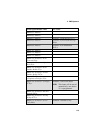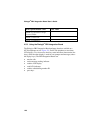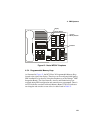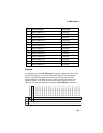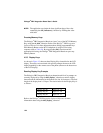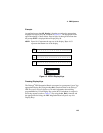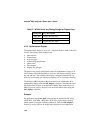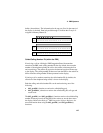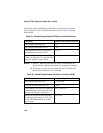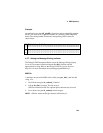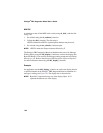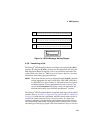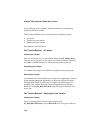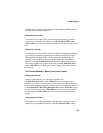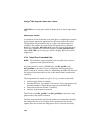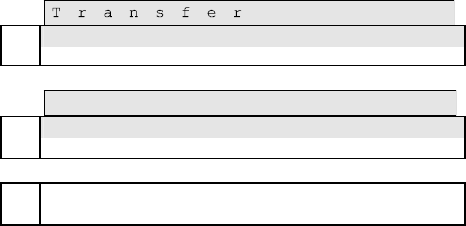
4. PBX Systems
buffer (shown below). The information for the top row (first 16 characters) of
the display is checked. Data in bytes 00 through 15 indicate that Transfer is
assigned to Memory Button 03.
data
54 72 61 6E 73 66 65 72 20 20 20 20 20 20 20 20
byte
00 01 02 03 04 05 06 07 08 09 10 11 12 13 14 15
data
20 20 20 20 20 20 20 20 20 20 20 20 20 20 20 20
byte
16 17 18 19 20 21 22 23 24 25 26 27 28 29 30 31
data
xx xx xx xx xx xx xx xx xx xx xx xx xx xx xx xx
byte
32 33 34 35 36 37 38 39 40 41 42 43 44 45 46 47
Called/Calling Number ID (within the PBX)
If receiving a call on a Dialogic
®
PBX Integration Board from another
extension, the PBX sends calling number ID data (by default, the extension
number of the telephone placing the call) to the station set between the first
and second rings. The station set processes the data and sends an ID message
to the display. The calling number ID data sent from the PBX to the station set
differs from the calling number ID data presented on the display.
If placing a call to another extension, the called number ID (by default, the
extension of the telephone being called) is shown in the display.
Both the calling and called number IDs can be retrieved using one of the
following:
• d42_gtcallid( ) function to retrieve the called/calling pair
• d42_gtcallidex( ) function to retrieve the called/calling ID, call type and
reason code
The d42_gtcallid( ) and d42_gtcallidex( ) functions retrieve the called/calling
number ID message sent from the PBX to the station set, not the data sent to
the display. Refer to the Dialogic
®
PBX Integration Software Reference for
more information about using the d42_gtcallid( ) and d42_gtcallidex( )
functions.
127



